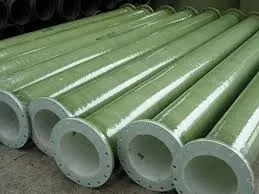
-
 Afrikaans
Afrikaans -
 Albanian
Albanian -
 Amharic
Amharic -
 Arabic
Arabic -
 Armenian
Armenian -
 Azerbaijani
Azerbaijani -
 Basque
Basque -
 Belarusian
Belarusian -
 Bengali
Bengali -
 Bosnian
Bosnian -
 Bulgarian
Bulgarian -
 Catalan
Catalan -
 Cebuano
Cebuano -
 China
China -
 China (Taiwan)
China (Taiwan) -
 Corsican
Corsican -
 Croatian
Croatian -
 Czech
Czech -
 Danish
Danish -
 Dutch
Dutch -
 English
English -
 Esperanto
Esperanto -
 Estonian
Estonian -
 Finnish
Finnish -
 French
French -
 Frisian
Frisian -
 Galician
Galician -
 Georgian
Georgian -
 German
German -
 Greek
Greek -
 Gujarati
Gujarati -
 Haitian Creole
Haitian Creole -
 hausa
hausa -
 hawaiian
hawaiian -
 Hebrew
Hebrew -
 Hindi
Hindi -
 Miao
Miao -
 Hungarian
Hungarian -
 Icelandic
Icelandic -
 igbo
igbo -
 Indonesian
Indonesian -
 irish
irish -
 Italian
Italian -
 Japanese
Japanese -
 Javanese
Javanese -
 Kannada
Kannada -
 kazakh
kazakh -
 Khmer
Khmer -
 Rwandese
Rwandese -
 Korean
Korean -
 Kurdish
Kurdish -
 Kyrgyz
Kyrgyz -
 Lao
Lao -
 Latin
Latin -
 Latvian
Latvian -
 Lithuanian
Lithuanian -
 Luxembourgish
Luxembourgish -
 Macedonian
Macedonian -
 Malgashi
Malgashi -
 Malay
Malay -
 Malayalam
Malayalam -
 Maltese
Maltese -
 Maori
Maori -
 Marathi
Marathi -
 Mongolian
Mongolian -
 Myanmar
Myanmar -
 Nepali
Nepali -
 Norwegian
Norwegian -
 Norwegian
Norwegian -
 Occitan
Occitan -
 Pashto
Pashto -
 Persian
Persian -
 Polish
Polish -
 Portuguese
Portuguese -
 Punjabi
Punjabi -
 Romanian
Romanian -
 Russian
Russian -
 Samoan
Samoan -
 Scottish Gaelic
Scottish Gaelic -
 Serbian
Serbian -
 Sesotho
Sesotho -
 Shona
Shona -
 Sindhi
Sindhi -
 Sinhala
Sinhala -
 Slovak
Slovak -
 Slovenian
Slovenian -
 Somali
Somali -
 Spanish
Spanish -
 Sundanese
Sundanese -
 Swahili
Swahili -
 Swedish
Swedish -
 Tagalog
Tagalog -
 Tajik
Tajik -
 Tamil
Tamil -
 Tatar
Tatar -
 Telugu
Telugu -
 Thai
Thai -
 Turkish
Turkish -
 Turkmen
Turkmen -
 Ukrainian
Ukrainian -
 Urdu
Urdu -
 Uighur
Uighur -
 Uzbek
Uzbek -
 Vietnamese
Vietnamese -
 Welsh
Welsh -
 Bantu
Bantu -
 Yiddish
Yiddish -
 Yoruba
Yoruba -
 Zulu
Zulu
fiberglass clarifier system for efficient water treatment and solid ...
Fiberglass Clarifier System for Efficient Water Treatment and Solid Removal
Water is one of our planet's most precious resources, and the need for efficient water treatment has never been greater. With increasing industrial activities, urban development, and agricultural practices, water bodies are often contaminated with various solids and impurities. To tackle this pressing issue, innovative technologies like the fiberglass clarifier system are emerging as effective solutions for enhancing water treatment processes.
A fiberglass clarifier system is a specialized equipment designed to remove suspended solids from water, thereby improving its quality. Unlike traditional clarifiers, which are often made from steel or concrete, fiberglass clarifiers offer several advantages, making them a popular choice in modern water treatment facilities. The primary function of a clarifier is to allow solid particles, including silt, clay, and organic matter, to settle down by gravitational force, separating them from the clear water above.
One of the key benefits of using fiberglass in clarifier construction is its lightweight nature. Fiberglass is significantly lighter than traditional materials, which simplifies the installation process and allows for easier transportation. This lightweight characteristic also contributes to lower shipping costs and reduces the overall carbon footprint associated with transporting heavy machinery. Furthermore, the flexibility of fiberglass allows for a more adaptable design, catering to the specific needs of various water treatment applications.
The corrosion resistance of fiberglass is another critical advantage. Water treatment facilities often deal with aggressive environments where chemicals in the water can cause serious damage to equipment made of steel or concrete. Fiberglass, on the other hand, exhibits superior resistance to corrosion, extending the lifespan of the clarifier and reducing maintenance costs. This durability makes fiberglass clarifiers a cost-effective investment for municipalities and industries seeking reliable water treatment solutions.
fiberglass clarifier system for efficient water treatment and solid ...

Moreover, fiberglass clarifiers are engineered for efficient solid removal. They typically incorporate advanced features such as inclined plates or tubes, which increase the settling surface area, allowing suspended solids to settle more rapidly. This design enhances the overall efficiency of the clarification process, resulting in better water quality and reduced operational costs.
In addition to their effectiveness in solid removal, fiberglass clarifiers contribute positively to the environment. By efficiently treating wastewater and removing solids, they help minimize the discharge of pollutants into natural water bodies. This has significant implications for ecosystem health, as improved water quality supports aquatic life and reduces the risk of harmful algae blooms, which can occur when excess nutrients are present in the water.
The implementation of fiberglass clarifier systems is gaining traction across various sectors, including municipal wastewater treatment plants, industrial facilities, and even in residential applications. As communities and industries increasingly recognize the importance of sustainable practices, investing in innovative water treatment technologies like fiberglass clarifiers aligns with global efforts to promote environmental stewardship.
In conclusion, the fiberglass clarifier system stands out as a pivotal technology in the realm of efficient water treatment and solid removal. By leveraging its lightweight, corrosion-resistant properties and advanced design features, this innovative solution plays a crucial role in combating water pollution and ensuring the availability of clean water for future generations. As we continue to face growing water challenges, the adoption of such technologies will be vital in creating a sustainable and resilient water management framework.









